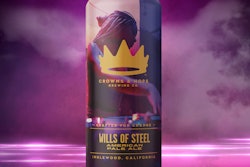
 Howard Wright, Senior Creative & Strategy Director UKL & IE, Equator Design
Howard Wright, Senior Creative & Strategy Director UKL & IE, Equator Design
Currently however, a discussion of trends does seem particularly timely. Retailers and producers, and even a fair number of packaging designers, are working hard to pin down the trends that are likely to dominate the coming year.
They will be asking: “Which trends are likely to harness the groundswell of new product innovation and refocused messaging of 2020? Which are likely to help a retailer to lock in and build on the market share they earned as a result of shifting consumer loyalties?
Following are just a few of the trends likely to deliver those sought-after outcomes for CPG players in 2021:
Sustainability
One of the positive aspects of 2020’s locked-down lifestyles and working from home regimes was that it gave people a fresh perspective on how our normal patterns of commuting and travel impact our natural environment.
Climate change and the role of every individual in living more sustainably to make a positive difference has resurfaced as a key political priority and media theme—with many hoping to recover lost ground after the plastics binges (the countless masks, cleaning wipes, and plastic wrappers) seen during the pandemic.
Learn now emotion tracking technology is making its way into packaging research for effective design. Read the article here.
A focus on sustainability can be seen across both national brands and retailers’ own branded ranges with renewed energy into removal of avoidable plastics from packaging, such as in greeting cards and fresh fruit and vegetables.
We can expect to see continued rethinking of conventional substrates and a focus on recycled materials and recyclability, such as removing glitter and foils from products—a trend that is really taking hold in the U.K.—and simple changes to packaging elements to ease post-consumer recycling.
We will also see sustainability increasingly used as a differentiator for marketing purposes, such as key callouts about waste reduction and recyclability on-pack, and for sustainable packaging to take center stage in ad campaigns, as sustainable packaging becomes a central element of the product concept and brand development strategy.
Materials
Alongside the influence of sustainability on the use of recycled and recyclable materials, we can expect the continuing growth in natural, healthy, and plant-based foods to be reflected in the materials used.
When it comes to luxury packaging for example, the go-to differentiators are changing. Foils, varnishes, and glitter are out. Interesting natural packaging formats and features such as ribbons, string, and swing tags, are in.
Here, the wholesomeness of the product will be reflected in the natural tones and textures of the packaging materials. While we can also expect to see the use of transparent materials to showcase the product and evidence its health benefits, recyclable and reusable packaging will remain a vehicle for delivering added benefit to the product—for example, jars that can be used for home storing and preserving.
With the financial and social impacts of the pandemic driving consumer appetites for a touch of “attainable” luxury, food and beverage packaging can provide a quick hit of indulgence and enable retailers to build differentiation as part of their tiering strategies.
Bold Patterns
Bold patterns will be one of the ways that product, category, and brand managers use to bring the fun back into food, shopping, and (hopefully) sharing in 2021. Appealing to consumers’ sense of optimism while creating impact on shelf, geometric patterns will be featured in eye-popping colors and apparently random designs.
We can also expect to see plenty of color-blocking, with a palette that takes inspiration from the most recent raft of tech and automotive launches, and shapes that take their cues from nature, with abstract leaf, mountain, and river contours.
Earthy Palettes
The back-to-nature theme remains dominant, but here we specifically consider color choice. Paint manufacturer Dulux released its color of the year, Brave Ground, and this can best be described as an easy-to-complement pastel walnut.
Interested in learning about cannabis packaging design? Watch this video from PACK EXPO Connects, “Setting a Design ‘North Star’ in a Fragmented, Emerging Market,” featuring Cristin Rudolph, VP of Consumer Products at Green Thumb Industries (GTI).
As biophilia—the idea that humans possess an innate tendency to seek connections with nature and other forms of life—becomes an increasingly important design concept for homes and workplaces, the emphasis on tones inspired by nature will also be visible in our store cupboards and refrigerators. Greens, browns, and greys are all on-trend hues that bring the outdoors to the in-store and home environment and have strong associations with natural ingredients and wholesome recipes.
Modern Serifs
Vintage and nostalgia will bring comfort and a sense of belonging to packaging design in 2021 and modern serifs will play a central role in delivering packs that reference these trends without becoming affectedly quaint reproductions of antiquated design.
Typography will take inspiration from classic labels and packaging design, while updating it with modern serifs that bring clarity and complement both bold patterns and nature-inspired hues. Hand-drawn serifs will enable brands and retailers to bring an authentically original look to their packs that works with the contours of the packaging’s shape and visual elements.
Tactile Print Effects
When it comes to print effects, 2021 will be all about depth and texture, creating a tactile connection with the product. 2020’s social distancing regimes have resulted in a longing to touch and experience life with all the senses, so we can expect raised print effects, interesting substrates, and lustrous natural finishes to create packs that invite consumers to experience the products with both their eyes and their fingertips. Meanwhile, white-out designs within a solid color and repeating patterns will also create a sense of depth that stimulates the senses.
Howard Wright is Senior Creative & Strategy Director UKL & IE, for Equator Design.






















